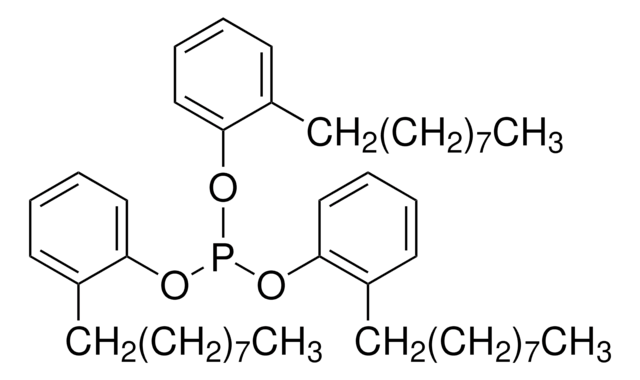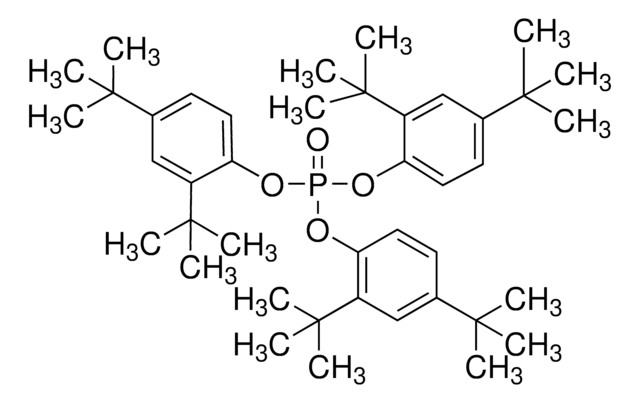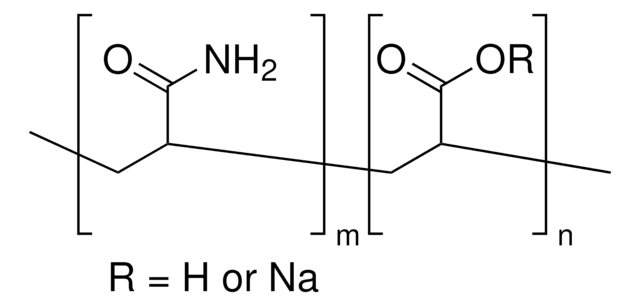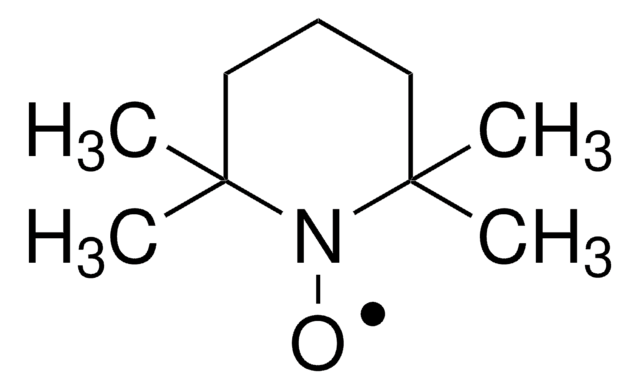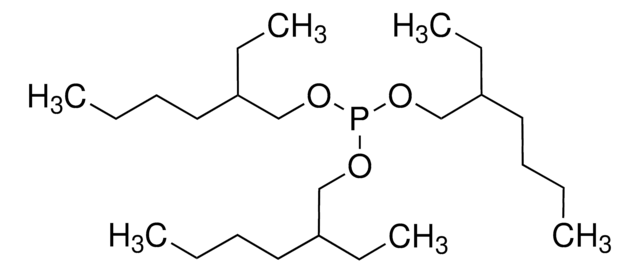441791
Tris(2,4-di-tert-butylphenyl) phosphite
Synonym(s):
2,4-Bis(1,1-dimethylethyl)phenol phosphite (3:1), Tri(2,4-di-tert -butylphenyl) phosphite, Tri(2,4-di-t -butylphenyl) phosphite
About This Item
Recommended Products
Quality Level
mp
181-184 °C (lit.)
SMILES string
CC(C)(C)c1ccc(OP(Oc2ccc(cc2C(C)(C)C)C(C)(C)C)Oc3ccc(cc3C(C)(C)C)C(C)(C)C)c(c1)C(C)(C)C
InChI
1S/C42H63O3P/c1-37(2,3)28-19-22-34(31(25-28)40(10,11)12)43-46(44-35-23-20-29(38(4,5)6)26-32(35)41(13,14)15)45-36-24-21-30(39(7,8)9)27-33(36)42(16,17)18/h19-27H,1-18H3
InChI key
JKIJEFPNVSHHEI-UHFFFAOYSA-N
Looking for similar products? Visit Product Comparison Guide
Related Categories
General description
Application
Storage Class
13 - Non Combustible Solids
wgk_germany
nwg
flash_point_f
Not applicable
flash_point_c
Not applicable
ppe
Eyeshields, Gloves, type N95 (US)
Certificates of Analysis (COA)
Search for Certificates of Analysis (COA) by entering the products Lot/Batch Number. Lot and Batch Numbers can be found on a product’s label following the words ‘Lot’ or ‘Batch’.
Already Own This Product?
Find documentation for the products that you have recently purchased in the Document Library.
Customers Also Viewed
Protocols
Phenolic Antioxidants are added to polyers for controlling their degradation process. Irgafos 168, Irganox 1010, Ethanox 330, Irganox 1076, BHT, and Irgafos 168 are often used as antioxidants to prevent the degradation of polypropylene polymer formulations. This HPLC method is for the quantitation of an additive or mix of additives in a polymeric material.
Our team of scientists has experience in all areas of research including Life Science, Material Science, Chemical Synthesis, Chromatography, Analytical and many others.
Contact Technical Service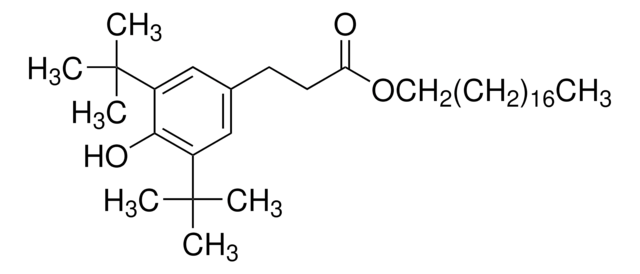

![3,9-Bis(octadecyloxy)-2,4,8,10-tetraoxa-3,9-diphosphaspiro[5.5]undecane](/deepweb/assets/sigmaaldrich/product/structures/426/453/2ce260eb-38be-4a9d-b432-9710a0c9a290/640/2ce260eb-38be-4a9d-b432-9710a0c9a290.png)
